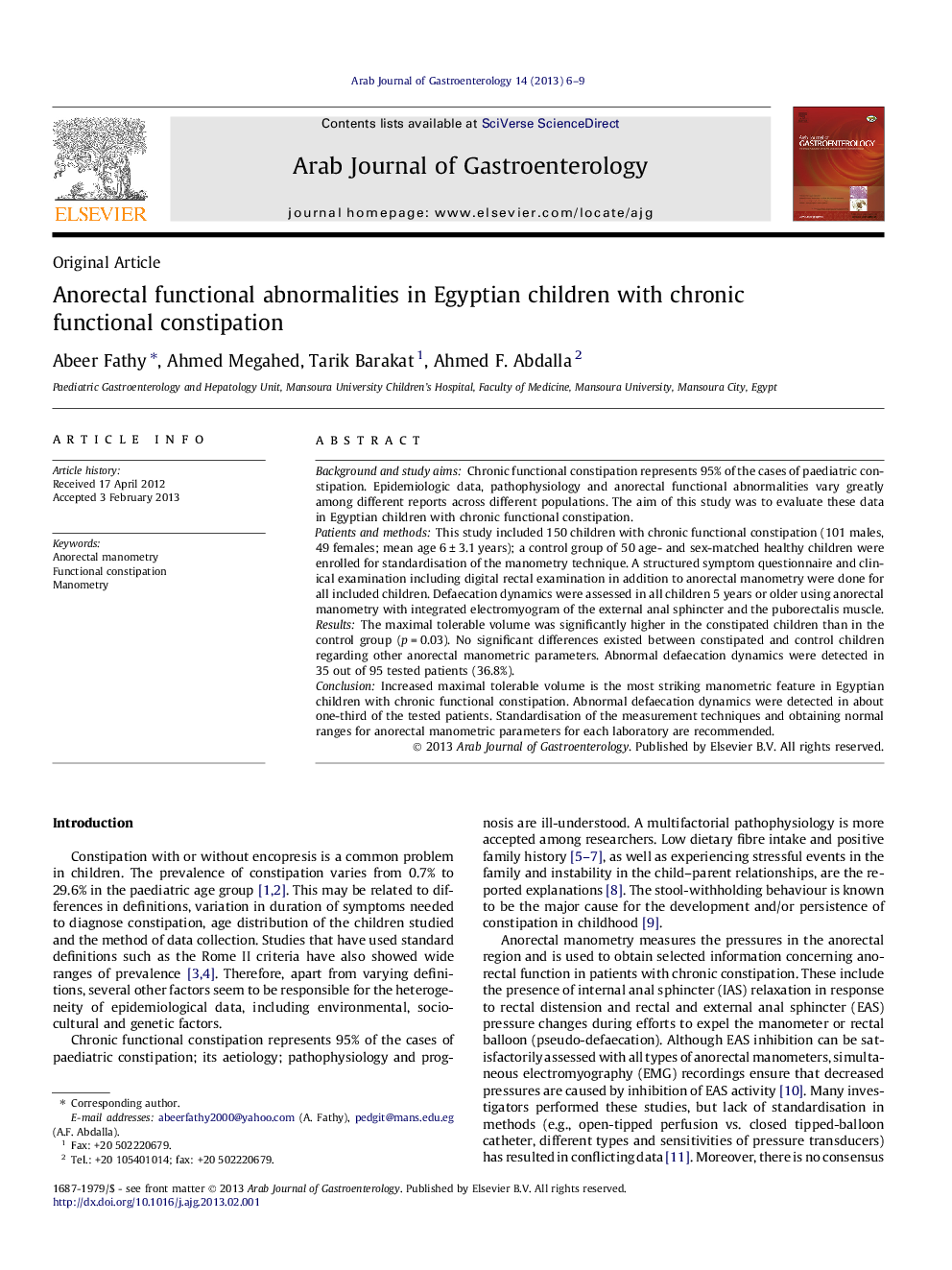| Article ID | Journal | Published Year | Pages | File Type |
|---|---|---|---|---|
| 3280793 | Arab Journal of Gastroenterology | 2013 | 4 Pages |
Background and study aimsChronic functional constipation represents 95% of the cases of paediatric constipation. Epidemiologic data, pathophysiology and anorectal functional abnormalities vary greatly among different reports across different populations. The aim of this study was to evaluate these data in Egyptian children with chronic functional constipation.Patients and methodsThis study included 150 children with chronic functional constipation (101 males, 49 females; mean age 6 ± 3.1 years); a control group of 50 age- and sex-matched healthy children were enrolled for standardisation of the manometry technique. A structured symptom questionnaire and clinical examination including digital rectal examination in addition to anorectal manometry were done for all included children. Defaecation dynamics were assessed in all children 5 years or older using anorectal manometry with integrated electromyogram of the external anal sphincter and the puborectalis muscle.ResultsThe maximal tolerable volume was significantly higher in the constipated children than in the control group (p = 0.03). No significant differences existed between constipated and control children regarding other anorectal manometric parameters. Abnormal defaecation dynamics were detected in 35 out of 95 tested patients (36.8%).ConclusionIncreased maximal tolerable volume is the most striking manometric feature in Egyptian children with chronic functional constipation. Abnormal defaecation dynamics were detected in about one-third of the tested patients. Standardisation of the measurement techniques and obtaining normal ranges for anorectal manometric parameters for each laboratory are recommended.
